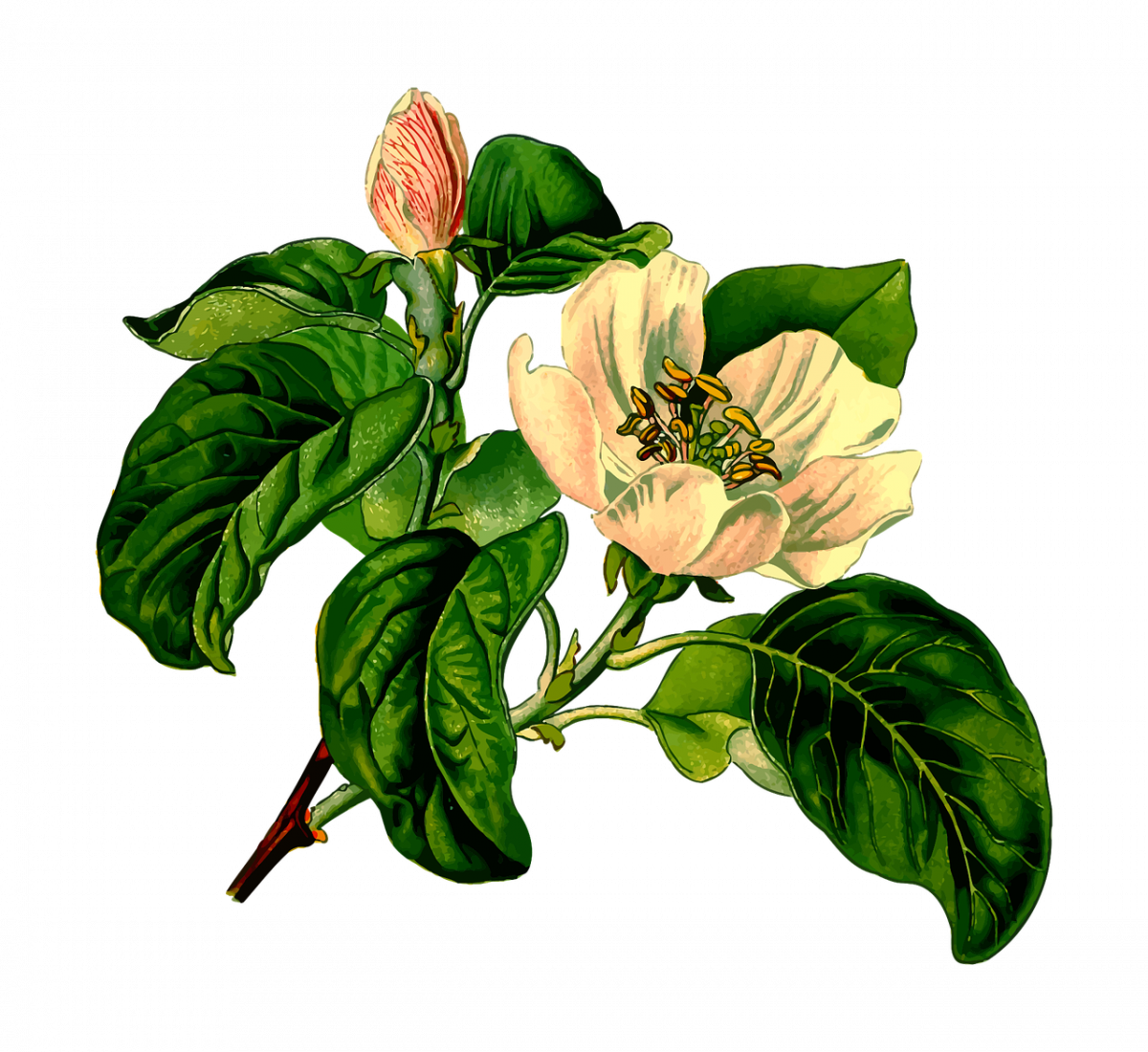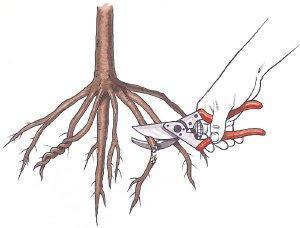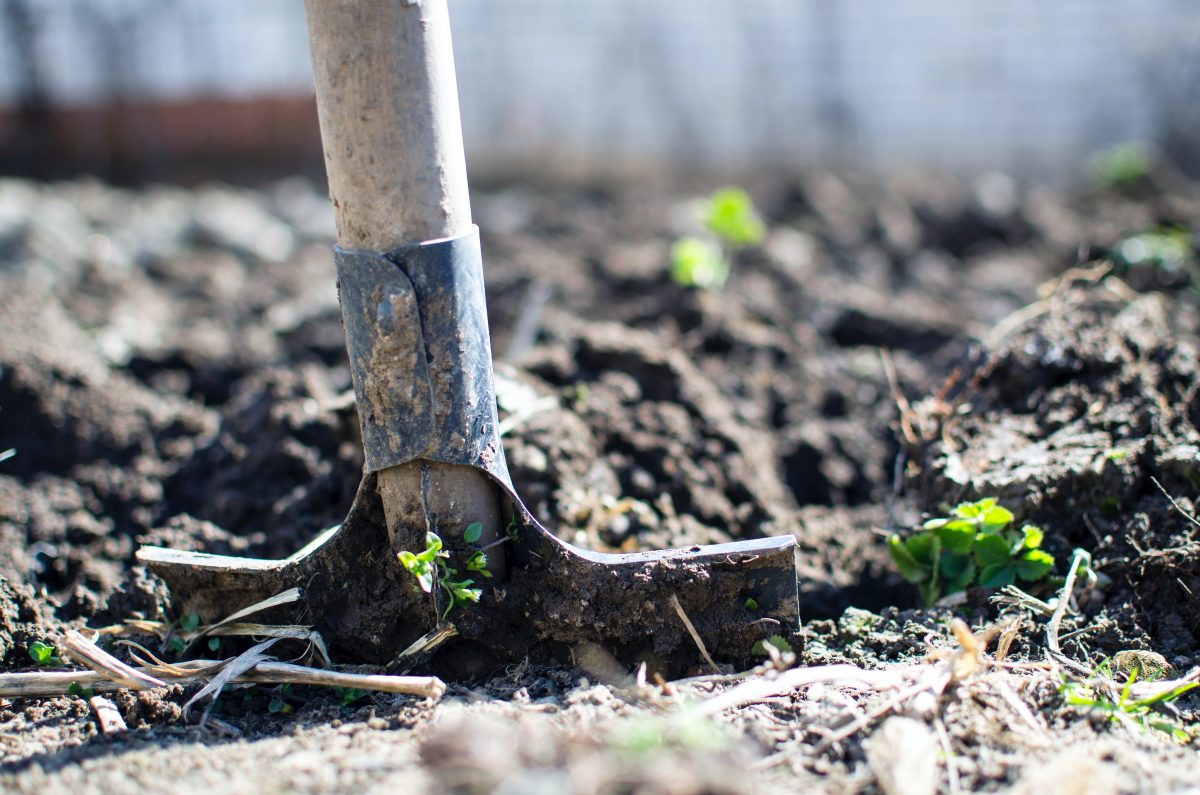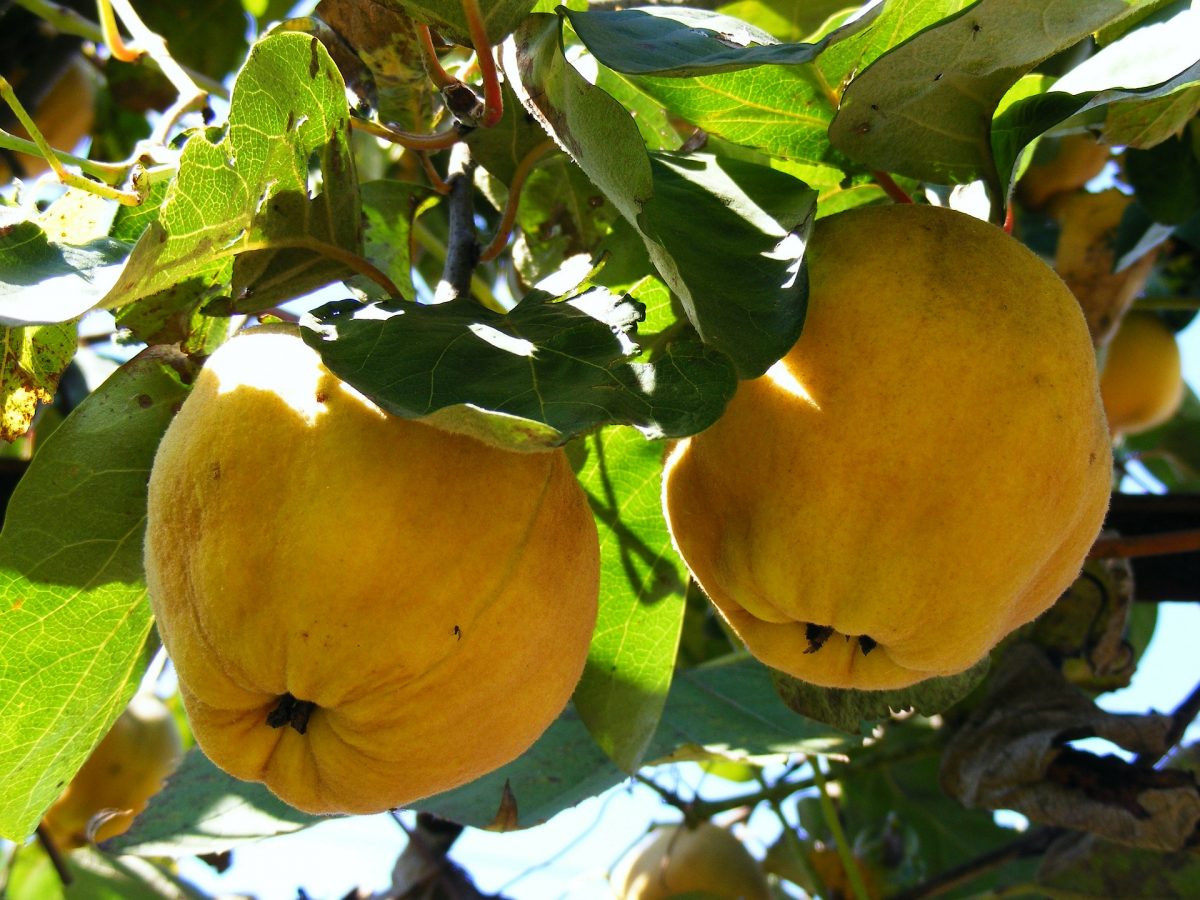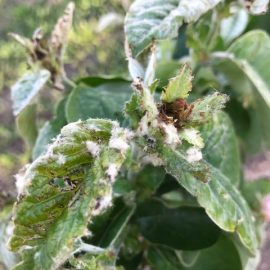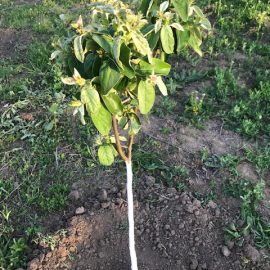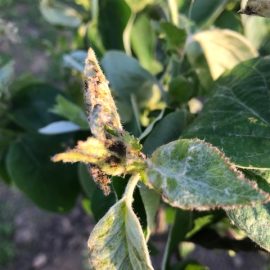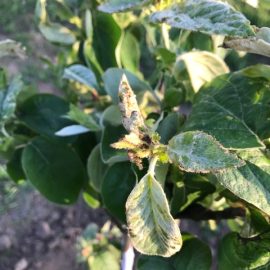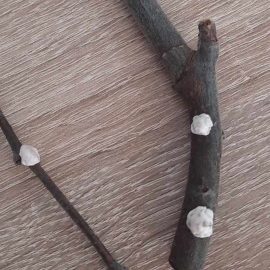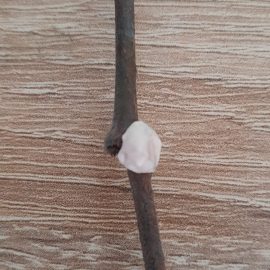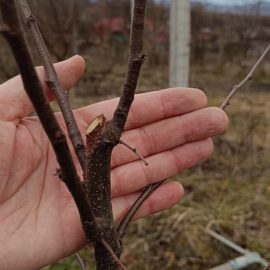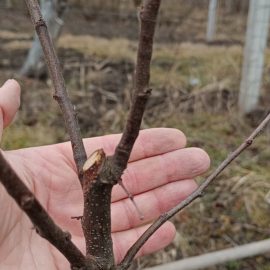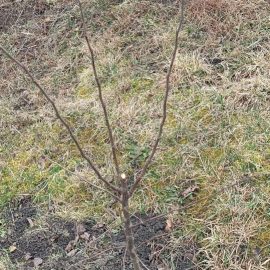Quince, planting, growing and harvesting
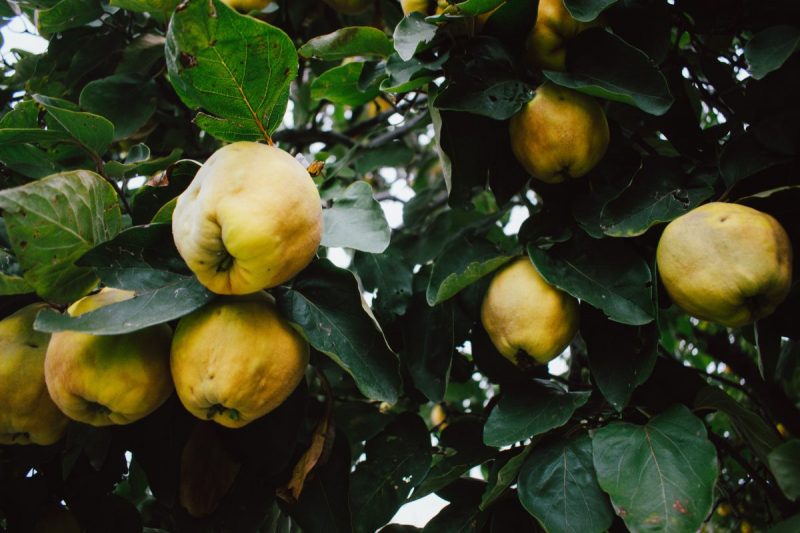
Quince (Cydonia oblonga) is a shrub, which occupies an important place in fruit tree cultivation, due to the fruit’s technological properties, as well as the species adaptability. Quince fruits are rich in gelling substances, for this reason, they are popular for jam but are also eaten fresh. They also have a better storage capacity compared to apples or pears.
Growing and fruiting particularities
The root system is shallow and laterally branched. The trunk is twisted and forms several stems at the base of the trunk. The crown is thick, with long branches. It flowers late after it starts to grow.
Quince flowers form at the top of the growth twigs. It does not overload with fruits and is not affected by alternating fruiting. Quince is an early tree. It begins to fruit 2-3 years after planting and has a high yield capacity.
Climate and soil requirements
Quince is a heat-demanding species, preferring areas with warm summers and milder winters, as well as more sheltered places. If well prepared for overwintering, the trees can withstand temperatures as low as -27°C. During the growing season, quince can be affected by temperatures below -1°C. Due to the poorly developed root system, the tree needs large amounts of water.
It grows well in areas with 600-650 mm of rainfall per year, but it can tolerate drought and excess water. Quince orchards should be planted on land where they benefit from light. Otherwise, the branches will wither, and the productive potential decreases. They grow well in all types of soil.
Soil preparation
The plot on which the orchard will be established must have a southern exposure and the rows must be oriented north-south. This provides a large amount of light during the day. The soil should be tilled at least three months in advance, and if the orchard is set up on land that has been used as an orchard, the soil must be prepared 1-2 years in advance. If the soil is heavily infested with weeds, it can be sprayed with specific products.
Recommended products
-
You can find products on a different store
Change Store -
You can find products on a different store
Change Store -
You can find products on a different store
Change Store -
You can find products on a different store
Change Store -
You can find products on a different store
Change Store -
You can find products on a different store
Change Store -
You can find products on a different store
Change Store -
You can find products on a different store
Change Store -
You can find products on a different store
Change Store -
You can find products on a different store
Change Store -
You can find products on a different store
Change Store -
You can find products on a different store
Change Store -
You can find products on a different store
Change Store -
You can find products on a different store
Change Store -
You can find products on a different store
Change Store -
You can find products on a different store
Change Store -
You can find products on a different store
Change Store -
You can find products on a different store
Change Store -
You can find products on a different store
Change Store -
You can find products on a different store
Change Store -
You can find products on a different store
Change Store -
You can find products on a different store
Change Store -
You can find products on a different store
Change Store -
You can find products on a different store
Change Store
Soil should be fertilized with organic fertilizers (manure, compost). It is recommended to scarify the soil so that the roots can grow easily. All foreign matter in the soil must be collected and removed from the plot. For precise planting, the land can be picketed. Picketing is the process of marking the position of each tree on the land, i.e. a stake is inserted into the planting site.
Planting time
The best time of year for planting is autumn at the end of October. Depending on the chosen cultivation system, for the classical system, the distance is 5x4m, and for the intensive system 4×2m. The saplings should be procured from authorized nurseries or fruit orchards. To obtain good and constant results, it is recommended to plant 2-3 varieties of quince for cross-pollination. In a home system, it can be planted in association with an apple tree or pear tree.
Root trimming
To stimulate root development, the roots should be trimmed. The operation is performed to remove the damaged portions and to maintain a healthy root system. The necrotic roots must be completely removed, and the healthy ones, shortened by 7-8 cm. Trimming should be done only if the saplings have been recently removed from the soil. After trimming, the roots can be soaked. Mudding is placing the roots in a mixture of yellow soil, fresh manure, and water. The role of the mud layer is to ensure a higher humidity around the root system. The mud must have the consistency of sour cream. If the quince saplings have been transported long distances, place them in a bowl of water for 2 hours. This operation aims to rehydrate the roots.
Actual planting
This stage begins by digging the pit. If the land has not been worked before planting, the pit should be dug 2-3 months earlier with the following dimensions: 100 x 100 x 80 cm. If the land has been worked properly, the pit can be dug 1-2 days before or even on the same day. In this case, the pit will have the following dimensions 50 x 50 x 50 cm.
At the bottom of the pit, add a mixture of fertile topsoil and well-decomposed manure. Insert the sapling into the pit so that the root stays on the fertile layer at the base. After the roots have been covered with 10 cm of soil, carry out the first tamping (from the edge to the center). When planting, the roots must be in close contact with the soil. The planting depth should be calculated so that the grafting point is 3-4 cm above the ground. Moreover, quince saplings can be covered with rodent protection materials.
Care works
In the first spring, the necessary water must be provided, and in young orchards, irrigation is mandatory. Around the trees, the soil must be dug superficially, abundantly watered, and covered with plant debris (mulch). Mulching maintains a good phytosanitary condition, prevents the development of weeds, conserves water in the soil, and reduces the number of maintenance works. The gap between the trees must be kept clean, as the weeds consume the water and nutrients needed by the trees. No herbicides should be used in the first three years of vegetation.
Pruning
Quince prunings should be carried out every year. Pruning makes the difference between a productive tree and a problematic tree. Mainly, they must ensure:
- balance between growth and fruition;
- simple, balanced crown;
- yield quality;
- crown lateral branching.
Recommended products
-
You can find products on a different store
Change Store -
You can find products on a different store
Change Store -
You can find products on a different store
Change Store -
You can find products on a different store
Change Store -
You can find products on a different store
Change Store -
You can find products on a different store
Change Store -
You can find products on a different store
Change Store -
You can find products on a different store
Change Store -
You can find products on a different store
Change Store -
You can find products on a different store
Change Store -
You can find products on a different store
Change Store -
You can find products on a different store
Change Store -
You can find products on a different store
Change Store -
You can find products on a different store
Change Store -
You can find products on a different store
Change Store -
You can find products on a different store
Change Store -
You can find products on a different store
Change Store -
You can find products on a different store
Change Store -
You can find products on a different store
Change Store -
You can find products on a different store
Change Store -
You can find products on a different store
Change Store -
You can find products on a different store
Change Store -
You can find products on a different store
Change Store -
You can find products on a different store
Change Store
In the first spring after planting shorten the tree to 80 cm from ground level. Once the buds have started growing, all growth up to 50 cm must be removed. In summer, when the twigs are 20-30 cm long, choose 3-4 (shoots) to form a crown. The selected twigs should be evenly distributed on the tree and have an insertion angle close to 90 degrees. Remove the twigs that were not chosen to form the future crown.
In the second year of vegetation, choose 3-4 twigs. If the branches are not grown evenly, shorten them to 50 cm. The cut should be made above an outward-facing shoot. If the branches are grown evenly and are no longer than 60 cm, do not shorten. Remove all growths up to a height of 50 cm. The twigs that compete with the main branches, as well as those that grow on the trunk, should be eliminated. Leave only the shoots that extend the main branches.
In the third year of vegetation, the aim is to consolidate the crown structure. Pruning should ensure that the crown is ventilated and illuminated. Every year, water sprouts and those with vertical growth must be removed. Quince does not suffer from overproduction. For this reason, pruning for fruit normalization is not carried out.
Recommended products
-
You can find products on a different store
Change Store -
You can find products on a different store
Change Store -
You can find products on a different store
Change Store -
You can find products on a different store
Change Store -
You can find products on a different store
Change Store -
You can find products on a different store
Change Store -
You can find products on a different store
Change Store -
You can find products on a different store
Change Store -
You can find products on a different store
Change Store -
You can find products on a different store
Change Store -
You can find products on a different store
Change Store -
You can find products on a different store
Change Store -
You can find products on a different store
Change Store -
You can find products on a different store
Change Store -
You can find products on a different store
Change Store -
You can find products on a different store
Change Store -
You can find products on a different store
Change Store -
You can find products on a different store
Change Store -
You can find products on a different store
Change Store -
You can find products on a different store
Change Store -
You can find products on a different store
Change Store -
You can find products on a different store
Change Store -
You can find products on a different store
Change Store -
You can find products on a different store
Change Store
Changing the branches’ position
To determine the growth and fruiting, a series of operations can be performed to change the position of the branches.
Branch training: represents the change of natural position of the branches, towards the vertical. This causes the branch to grow and strengthen. This operation should carried out mainly in the mature phase of the trees. In this phase, the vegetative growth ceases and this operation leads to the rejuvenation of the tree crown.
Branch tying down: it consists in changing the position of the branches, towards the horizontal. This causes the fruit buds on the branch to grow and aerates the crown. Branches can be tied down below the horizontal to obtain abundant fruiting. This operation is practiced in the young stage of the trees when vegetative growth is predominant.
Branch arching: through this change of position, the basal part remains ascending, and the terminal part is inclined below the horizontal (descent). This operation stops or slows down the growth in length of the branch and promotes bud growth. Trees that have been arched begin to bear fruit 2-3 years earlier.
Weed control
Keep clean the interval between rows, as weeds compete with trees for water and nutrients in the soil. For this reason, they must be removed with a weed cutter to add organic matter to the soil. However, the most practical solution is to use herbicides. It is recommended to use approved herbicides approved for quince.
Spray the solution carefully so that the herbicide vapors do not reach the tree leaves. No herbicides should be used in the first three years after planting.
Recommended products
-
You can find products on a different store
Change Store -
You can find products on a different store
Change Store -
You can find products on a different store
Change Store -
You can find products on a different store
Change Store -
You can find products on a different store
Change Store -
You can find products on a different store
Change Store -
You can find products on a different store
Change Store -
You can find products on a different store
Change Store -
You can find products on a different store
Change Store -
You can find products on a different store
Change Store -
You can find products on a different store
Change Store -
You can find products on a different store
Change Store -
You can find products on a different store
Change Store -
You can find products on a different store
Change Store -
You can find products on a different store
Change Store -
You can find products on a different store
Change Store -
You can find products on a different store
Change Store -
You can find products on a different store
Change Store -
You can find products on a different store
Change Store -
You can find products on a different store
Change Store -
You can find products on a different store
Change Store -
You can find products on a different store
Change Store -
You can find products on a different store
Change Store -
You can find products on a different store
Change Store
Protecting trees from frost
When low temperatures are announced, in the orchard, you can burn easily burning materials (gathered in piles), which produces a large amount of smoke (rubber, straw, manure, tar, peat, etc.). Thus, the smoke layer that forms above the orchard does not allow heat to be released from the soil and thus maintains a higher temperature at the trunk/tree crown level. It is very important to keep the fire on throughout the night, especially before sunrise, when temperatures drop sharply. This operation can protect the trees from temperatures down to -3 °C.
Fertilization
Quince reacts well to organic fertilizers application but prefers lower doses than pear or apple tree. Once every 2 years apply manure. If manure is not available, it can be replaced with NPK complex fertilizer, applied annually. After fertilization, the soil must be tilled to a depth of 20-30 cm. Quince also reacts well to foliar fertilizers.
Recommended products
-
You can find products on a different store
Change Store -
You can find products on a different store
Change Store -
You can find products on a different store
Change Store -
You can find products on a different store
Change Store -
You can find products on a different store
Change Store -
You can find products on a different store
Change Store -
You can find products on a different store
Change Store -
You can find products on a different store
Change Store -
You can find products on a different store
Change Store -
You can find products on a different store
Change Store -
You can find products on a different store
Change Store -
You can find products on a different store
Change Store -
You can find products on a different store
Change Store -
You can find products on a different store
Change Store -
You can find products on a different store
Change Store -
You can find products on a different store
Change Store -
You can find products on a different store
Change Store -
You can find products on a different store
Change Store -
You can find products on a different store
Change Store -
You can find products on a different store
Change Store -
You can find products on a different store
Change Store -
You can find products on a different store
Change Store -
You can find products on a different store
Change Store -
You can find products on a different store
Change Store
Irrigation
Irrigation is mandatory in young orchards and areas with rainfall deficits. The best results are obtained by furrow and drip irrigation. This reduces the incidence of leaf diseases. Irrigation can be done whenever needed.
Pests and disease control
The plantation’s phytosanitary condition is very important. Carrying out phytosanitary treatments according to a specific schedule can significantly reduce the occurrence of diseases and pests.
To destroy infection outbreaks in the orchard, apply treatments during the vegetative rest period (autumn-winter). The treatments can also be applied in the winter windows when the temperature is higher than 5 °C.
Against diseases, the first treatment (after leaf fall) should be done with copper-based products. The second spraying with copper-based products must be done in spring, at bud break. The solution should be sprayed all over the tree, from the base of the tree to the branches. These treatments need to be applied on days without rainfall, with temperatures above 6-7° C, so the solution does not freeze on the trees.
Recommended products
-
You can find products on a different store
Change Store -
You can find products on a different store
Change Store -
You can find products on a different store
Change Store -
You can find products on a different store
Change Store -
You can find products on a different store
Change Store -
You can find products on a different store
Change Store -
You can find products on a different store
Change Store -
You can find products on a different store
Change Store -
You can find products on a different store
Change Store -
You can find products on a different store
Change Store -
You can find products on a different store
Change Store -
You can find products on a different store
Change Store -
You can find products on a different store
Change Store -
You can find products on a different store
Change Store -
You can find products on a different store
Change Store -
You can find products on a different store
Change Store -
You can find products on a different store
Change Store -
You can find products on a different store
Change Store -
You can find products on a different store
Change Store -
You can find products on a different store
Change Store -
You can find products on a different store
Change Store -
You can find products on a different store
Change Store -
You can find products on a different store
Change Store -
You can find products on a different store
Change Store
7-10 days after applying the copper treatments, can be applied horticultural oil, which acts against pests that may overwinter in the tree bark.
Recommended products
-
You can find products on a different store
Change Store -
You can find products on a different store
Change Store -
You can find products on a different store
Change Store -
You can find products on a different store
Change Store -
You can find products on a different store
Change Store -
You can find products on a different store
Change Store -
You can find products on a different store
Change Store -
You can find products on a different store
Change Store -
You can find products on a different store
Change Store -
You can find products on a different store
Change Store -
You can find products on a different store
Change Store -
You can find products on a different store
Change Store -
You can find products on a different store
Change Store -
You can find products on a different store
Change Store -
You can find products on a different store
Change Store -
You can find products on a different store
Change Store -
You can find products on a different store
Change Store -
You can find products on a different store
Change Store -
You can find products on a different store
Change Store -
You can find products on a different store
Change Store -
You can find products on a different store
Change Store -
You can find products on a different store
Change Store -
You can find products on a different store
Change Store -
You can find products on a different store
Change Store
Harvesting
Quince fruits ripen at the end of September, and the optimal time of harvest is recognized as follows: if on wiping, the fluff falls off, the quince can be harvested. If harvested too early, the fluff can only be removed with the skin. Generally, the operation must be performed carefully.
Also, do not break the branches on which the fruit is attached. On these branches are small buds, which will form flowers and leaves the following spring. Quinces have a good storage capacity. At temperatures of 4-5 ° C and relative humidity (air) of 85%, they can be stored for 2-3 months.














































































































































































































































































































































































































































